SNVS077J May 2004 – June 2016 LM2677
PRODUCTION DATA.
- 1 Features
- 2 Applications
- 3 Description
- 4 Revision History
- 5 Pin Configuration and Functions
-
6 Specifications
- 6.1 Absolute Maximum Ratings
- 6.2 ESD Ratings
- 6.3 Recommended Operating Conditions
- 6.4 Thermal Information
- 6.5 Electrical Characteristics - 3.3 V
- 6.6 Electrical Characteristics - 5 V
- 6.7 Electrical Characteristics - 12 V
- 6.8 Electrical Characteristics - Adjustable
- 6.9 Electrical Characteristics - All Output Voltage Versions
- 6.10 Typical Characteristics
- 7 Detailed Description
- 8 Application and Implementation
- 9 Power Supply Recommendations
- 10Layout
- 11Device and Documentation Support
- 12Mechanical, Packaging, and Orderable Information
Package Options
Mechanical Data (Package|Pins)
Thermal pad, mechanical data (Package|Pins)
- KTW|7
Orderable Information
6 Specifications
6.1 Absolute Maximum Ratings
over recommended operating junction temperature range of –40°C to 125°C (unless otherwise noted)(1)(2)| MIN | MAX | UNIT | ||
|---|---|---|---|---|
| Input supply voltage | 45 | V | ||
| ON/OFF pin voltage | –0.1 | 6 | V | |
| Switch voltage to ground(3) | –1 | VIN | V | |
| Boost pin voltage | VSW + 8 | V | ||
| Feedback pin voltage | –0.3 | 14 | V | |
| Power dissipation | Internally limited | |||
| Soldering temperature | Wave (4 s) | 260 | °C | |
| Infrared (10 s) | 240 | |||
| Vapor phase (75 s) | 219 | |||
| Storage temperature, Tstg | –65 | 150 | °C | |
(1) Stresses beyond those listed under Absolute Maximum Ratings may cause permanent damage to the device. These are stress ratings only, which do not imply functional operation of the device at these or any other conditions beyond those indicated under Recommended Operating Conditions. Exposure to absolute-maximum-rated conditions for extended periods may affect device reliability.
(2) If Military/Aerospace specified devices are required, please contact the Texas Instruments Sales Office/ Distributors for availability and specifications.
(3) The switch voltage to ground specification applies to DC voltage. An extended negative voltage limit of –10 V applies to a pulse of up to 20 ns, –6 V of 60 ns, and –3 V of up to 100 ns.
6.2 ESD Ratings
| VALUE | UNIT | |||
|---|---|---|---|---|
| V(ESD) | Electrostatic discharge | Human-body model (HBM), per ANSI/ESDA/JEDEC JS-001(1)(2) | ±2000 | V |
(1) JEDEC document JEP155 states that 500-V HBM allows safe manufacturing with a standard ESD control process.
(2) ESD was applied using the human-body model, a 100-pF capacitor discharged through a 1.5-kΩ resistor into each pin.
6.3 Recommended Operating Conditions
over operating free-air temperature range (unless otherwise noted)| MIN | MAX | UNIT | ||
|---|---|---|---|---|
| Supply voltage | 8 | 40 | V | |
| TJ | Junction temperature | –40 | 125 | °C |
6.4 Thermal Information
| THERMAL METRIC(1) | LM2677 | UNIT | ||||
|---|---|---|---|---|---|---|
| KTW (TO-263) | NDZ (TO-220) | NHM (VSON) | ||||
| 7 PINS | 7 PINS | 14 PINS | ||||
| RθJA | Junction-to-ambient thermal resistance | See(2) | 56 | — | — | °C/W |
| See(3) | 35 | — | — | |||
| See(4) | 26 | — | — | |||
| See(5) | — | 65 | — | |||
| See(6) | — | 45 | — | |||
| See(7) | — | — | 55 | |||
| See(8) | — | — | 29 | |||
| RθJC(top) | Junction-to-case (top) thermal resistance | 2 | 2 | — | °C/W | |
| RθJB | Junction-to-board thermal resistance | — | — | — | °C/W | |
| ψJT | Junction-to-top characterization parameter | — | — | — | °C/W | |
| ψJB | Junction-to-board characterization parameter | — | — | — | °C/W | |
| RθJC(bot) | Junction-to-case (bottom) thermal resistance | — | — | — | °C/W | |
(1) For more information about traditional and new thermal metrics, see the Semiconductor and IC Package Thermal Metrics application report.
(2) Junction to ambient thermal resistance for the 7-pin DDPAK/TO-263 mounted horizontally against a PC board area of 0.136 square inches (the same size as the DDPAK/TO-263 package) of 1 oz. (0.0014 in. thick) copper.
(3) Junction to ambient thermal resistance for the 7-pin DDPAK/TO-263 mounted horizontally against a PC board area of 0.4896 square inches (3.6 times the area of the DDPAK/TO-263 package) of 1 oz. (0.0014 in. thick) copper.
(4) Junction to ambient thermal resistance for the 7-pin DDPAK/TO-263 mounted horizontally against a PC board copper area of 1.0064 square inches (7.4 times the area of the DDPAK/TO-263 package) of 1 oz. (0.0014 in. thick) copper. Additional copper area reduces thermal resistance further.
(5) Junction to ambient thermal resistance (no external heat sink) for the 7-pin TO-220 package mounted vertically, with ½ inch leads in a socket, or on a PC board with minimum copper area.
(6) Junction to ambient thermal resistance (no external heat sink) for the 7-pin TO-220 package mounted vertically, with ½ inch leads soldered to a PC board containing approximately 4 square inches of (1 oz.) copper area surrounding the pins.
(7) Junction to ambient thermal resistance for the 14-pin VSON mounted on a PC board copper area equal to the die attach paddle.
(8) Junction to ambient thermal resistance for the 14-lead VSON mounted on a PC board copper area using 12 vias to a second layer of copper equal to die attach paddle. Additional copper area reduces thermal resistance further. For layout recommendations, refer to Application Note, AN-1187 Leadless Leadframe Package (LLP).
6.5 Electrical Characteristics – 3.3 V
TJ = 25°C, sync pin open circuited (unless otherwise noted)| PARAMETER | TEST CONDITIONS | MIN(1) | TYP(2) | MAX(1) | UNIT | ||
|---|---|---|---|---|---|---|---|
| VOUT | Output voltage | VIN = 8 V to 40 V, 100 mA ≤ IOUT ≤ 5 A | TJ = 25°C | 3.234 | 3.3 | 3.366 | V |
| TJ = –40°C to 125°C | 3.201 | 3.399 | |||||
| η | Efficiency | VIN = 12 V, ILOAD = 5 A | 82% | ||||
(1) All limits are ensured at room temperature and at temperature extremes. All room temperature limits are 100% tested during production with TA = TJ = 25°C. All limits at temperature extremes are ensured through correlation using standard standard Quality Control (SQC) methods. All limits are used to calculate Average Outgoing Quality Level (AOQL).
(2) Typical values are determined with TA = TJ = 25°C and represent the most likely norm.
6.6 Electrical Characteristics – 5 V
TJ = 25°C, sync pin open circuited (unless otherwise noted)| PARAMETER | TEST CONDITIONS | MIN(1) | TYP(2) | MAX(1) | UNIT | ||
|---|---|---|---|---|---|---|---|
| VOUT | Output voltage | VIN = 8 V to 40 V, 100 mA ≤ IOUT ≤ 5 A | TJ = 25°C | 4.9 | 5 | 5.1 | V |
| TJ = –40°C to 125°C | 4.85 | 5.15 | |||||
| η | Efficiency | VIN = 12 V, ILOAD = 5 A | 84% | ||||
(1) All limits are ensured at room temperature and at temperature extremes. All room temperature limits are 100% tested during production with TA = TJ = 25°C. All limits at temperature extremes are ensured through correlation using standard standard Quality Control (SQC) methods. All limits are used to calculate Average Outgoing Quality Level (AOQL).
(2) Typical values are determined with TA = TJ = 25°C and represent the most likely norm.
6.7 Electrical Characteristics – 12 V
TJ = 25°C, sync pin open circuited (unless otherwise noted)| PARAMETER | TEST CONDITIONS | MIN(1) | TYP(2) | MAX(1) | UNIT | ||
|---|---|---|---|---|---|---|---|
| VOUT | Output voltage | VIN = 15 V to 40 V, 100 mA ≤ IOUT ≤ 5 A | TJ = 25°C | 11.76 | 12 | 12.24 | V |
| TJ = –40°C to 125°C | 11.64 | 12.36 | |||||
| η | Efficiency | VIN = 24 V, ILOAD = 5 A | 92% | ||||
(1) All limits are ensured at room temperature and at temperature extremes. All room temperature limits are 100% tested during production with TA = TJ = 25°C. All limits at temperature extremes are ensured through correlation using standard standard Quality Control (SQC) methods. All limits are used to calculate Average Outgoing Quality Level (AOQL).
(2) Typical values are determined with TA = TJ = 25°C and represent the most likely norm.
6.8 Electrical Characteristics – Adjustable
TJ = 25°C, sync pin open circuited (unless otherwise noted)| PARAMETER | TEST CONDITIONS | MIN(1) | TYP(2) | MAX(1) | UNIT | ||
|---|---|---|---|---|---|---|---|
| VFB | Feedback voltage | VIN = 8 V to 40 V, 100 mA ≤ IOUT ≤ 5 A, VOUT programmed for 5 V |
TJ = 25°C | 1.186 | 1.21 | 1.234 | V |
| TJ = –40°C to 125°C | 1.174 | 1.246 | |||||
| η | Efficiency | VIN = 12 V, ILOAD = 5 A | 84% | ||||
(1) All limits are ensured at room temperature and at temperature extremes. All room temperature limits are 100% tested during production with TA = TJ = 25°C. All limits at temperature extremes are ensured through correlation using standard standard Quality Control (SQC) methods. All limits are used to calculate Average Outgoing Quality Level (AOQL).
(2) Typical values are determined with TA = TJ = 25°C and represent the most likely norm.
6.9 Electrical Characteristics – All Output Voltage Versions
TJ = 25°C, VIN= 12 V for the 3.3-V, 5-V, and Adjustable versions, VIN = 24 V for the 12-V version, sync pin open circuited (unless otherwise noted)| PARAMETER | TEST CONDITIONS | MIN(1) | TYP(2) | MAX(1) | UNIT | ||
|---|---|---|---|---|---|---|---|
| IQ | Quiescent current | VFEEDBACK = 8 V for 3.3-V, 5-V, and adjustable versions, VFEEDBACK = 15 V for 12-V versions | 4.2 | 6 | mA | ||
| ISTBY | Standby quiescent current | ON/OFF pin = 0 V | TJ = 25°C | 50 | 100 | μA | |
| TJ = –40°C to 125°C | 150 | ||||||
| ICL | Current limit | TJ = 25°C | 6.1 | 7 | 8.3 | A | |
| TJ = –40°C to 125°C | 5.75 | 8.75 | |||||
| IL | Output leakage current | VIN = 40 V, ON/OFF pin = 0 V | 1 | 200 | μA | ||
| VSWITCH = 0 V | 15 | ||||||
| VSWITCH = –1 V | 6 | mA | |||||
| RDS(ON) | Switch on-resistance | ISWITCH = 5 A | TJ = 25°C | 0.12 | 0.14 | Ω | |
| TJ = –40°C to 125°C | 0.225 | ||||||
| fO | Oscillator frequency | Measured at switch pin | TJ = 25°C | 260 | kHz | ||
| TJ = –40°C to 125°C | 225 | 280 | |||||
| D | Duty cycle | Maximum duty cycle | 91% | ||||
| Minimum duty cycle | 0% | ||||||
| IBIAS | Feedback bias current | VFEEDBACK = 1.3 V, ADJ version only | 85 | nA | |||
| VON/OFF | ON/OFF threshold voltage | TJ = 25°C | 1.4 | V | |||
| TJ = –40°C to 125°C | 0.8 | 2 | |||||
| ION/OFF | ON/OFF input current | ON/OFF input = 0 V | TJ = 25°C | 20 | μA | ||
| TJ = –40°C to 125°C | 45 | ||||||
| FSYNC | Synchronization frequency | VSYNC(pin 5) = 3.5 V, 50% duty cycle | 400 | kHz | |||
| VSYNC | SYNC threshold voltage | 1.4 | V | ||||
(1) All limits are ensured at room temperature and at temperature extremes. All room temperature limits are 100% tested during production with TA = TJ = 25°C. All limits at temperature extremes are ensured through correlation using standard standard Quality Control (SQC) methods. All limits are used to calculate Average Outgoing Quality Level (AOQL).
(2) Typical values are determined with TA = TJ = 25°C and represent the most likely norm.
6.10 Typical Characteristics
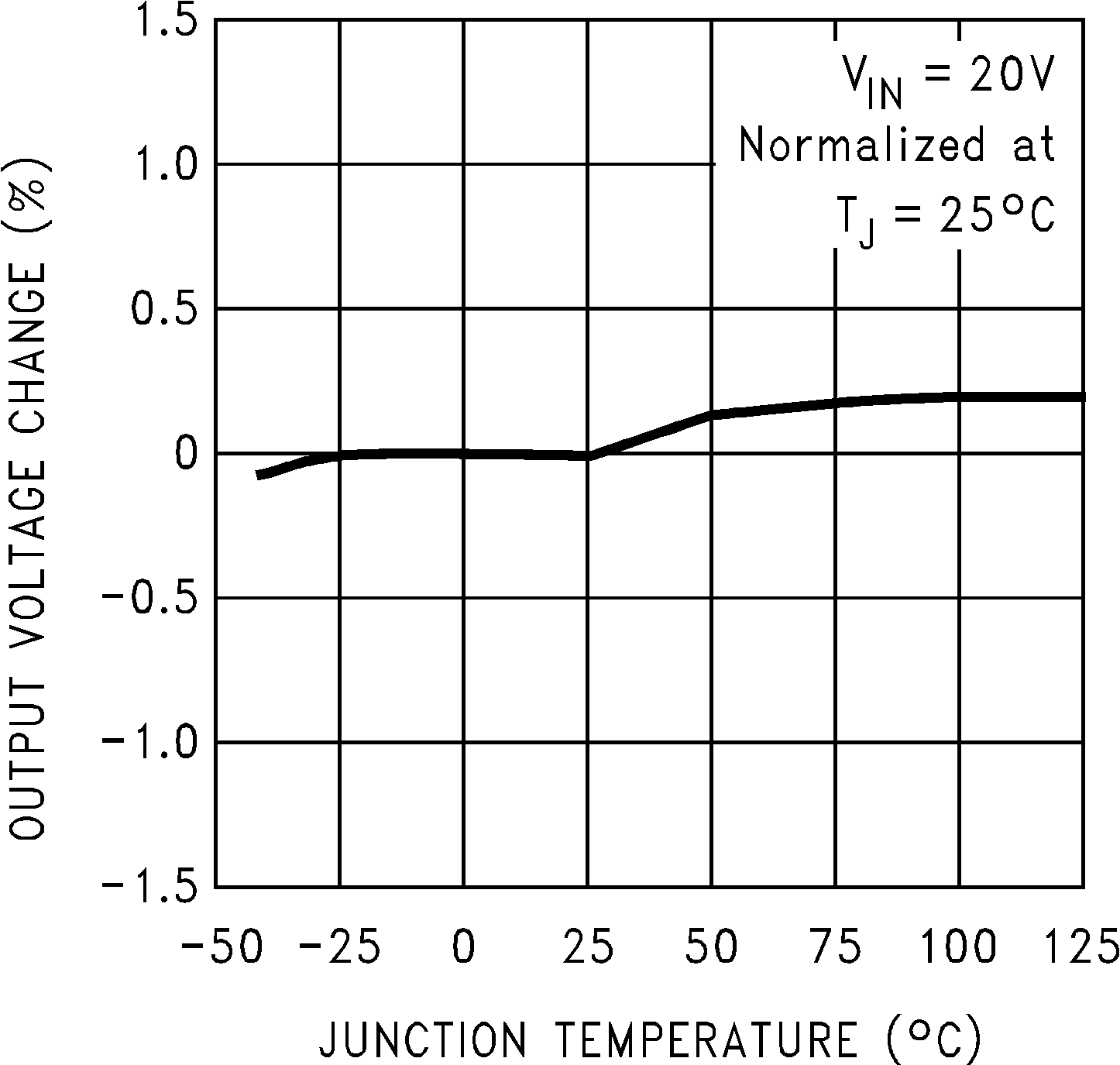 Figure 1. Normalized Output Voltage
Figure 1. Normalized Output Voltage
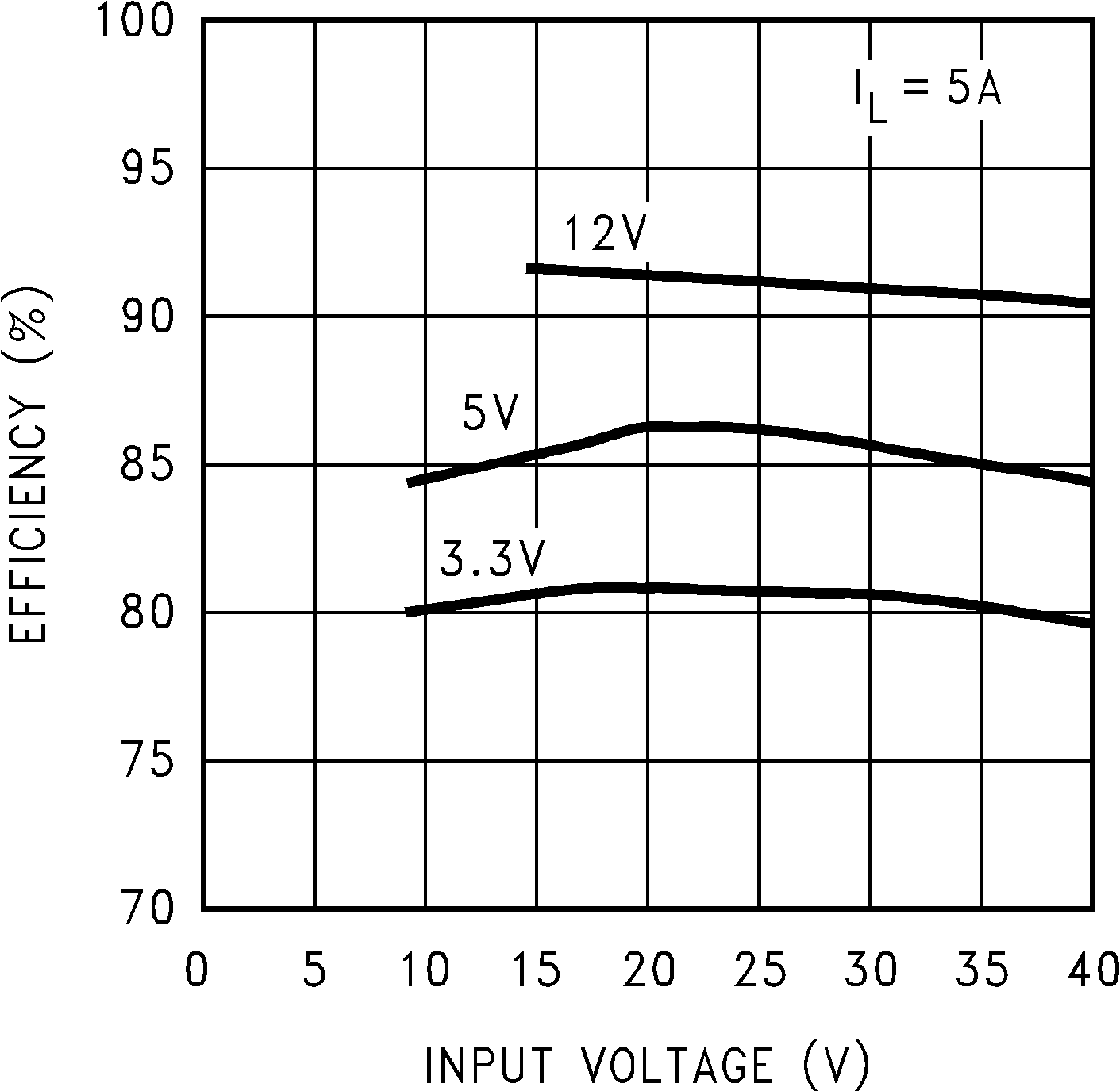 Figure 3. Efficiency vs Input Voltage
Figure 3. Efficiency vs Input Voltage
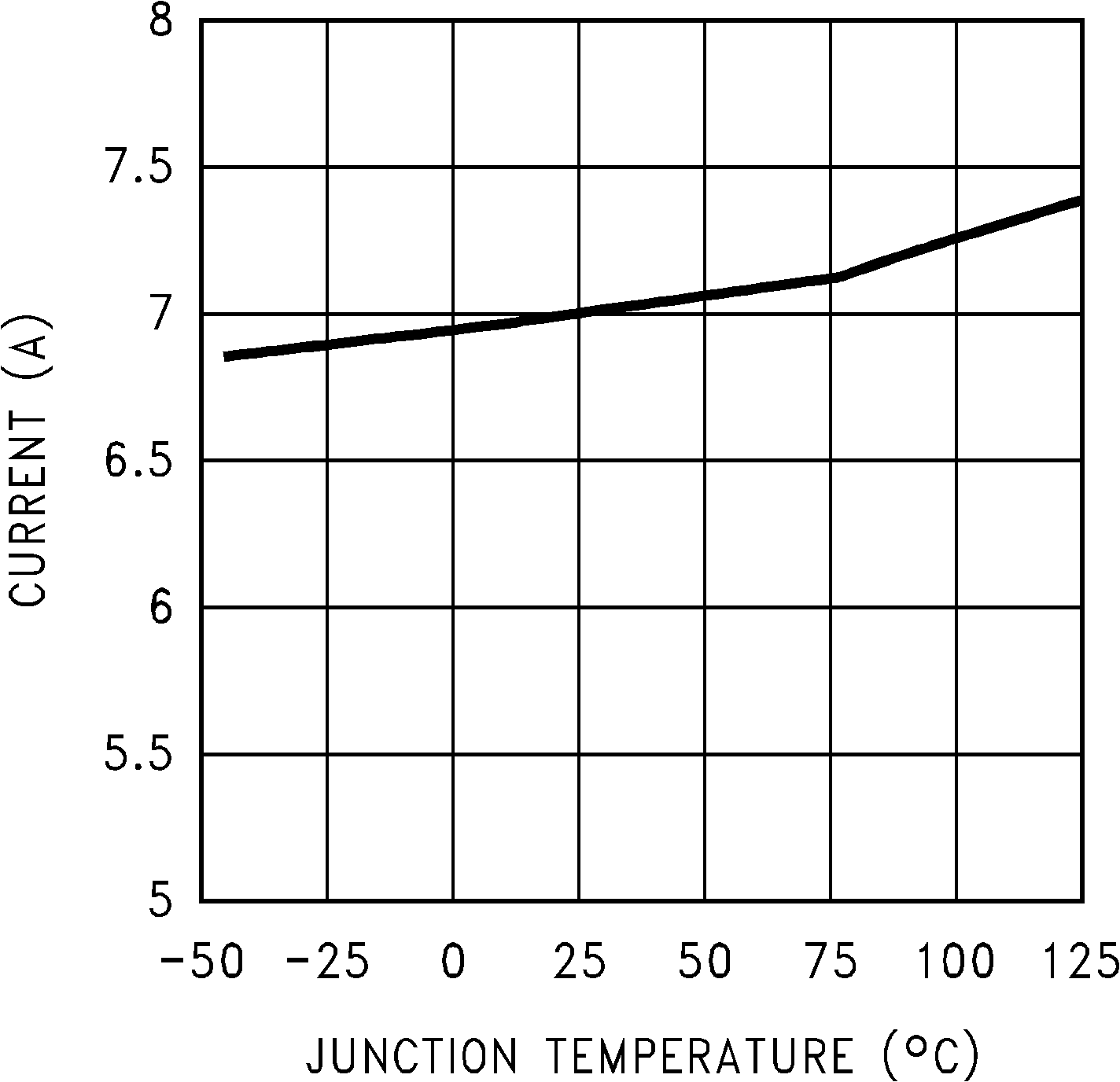 Figure 5. Switch Current Limit
Figure 5. Switch Current Limit
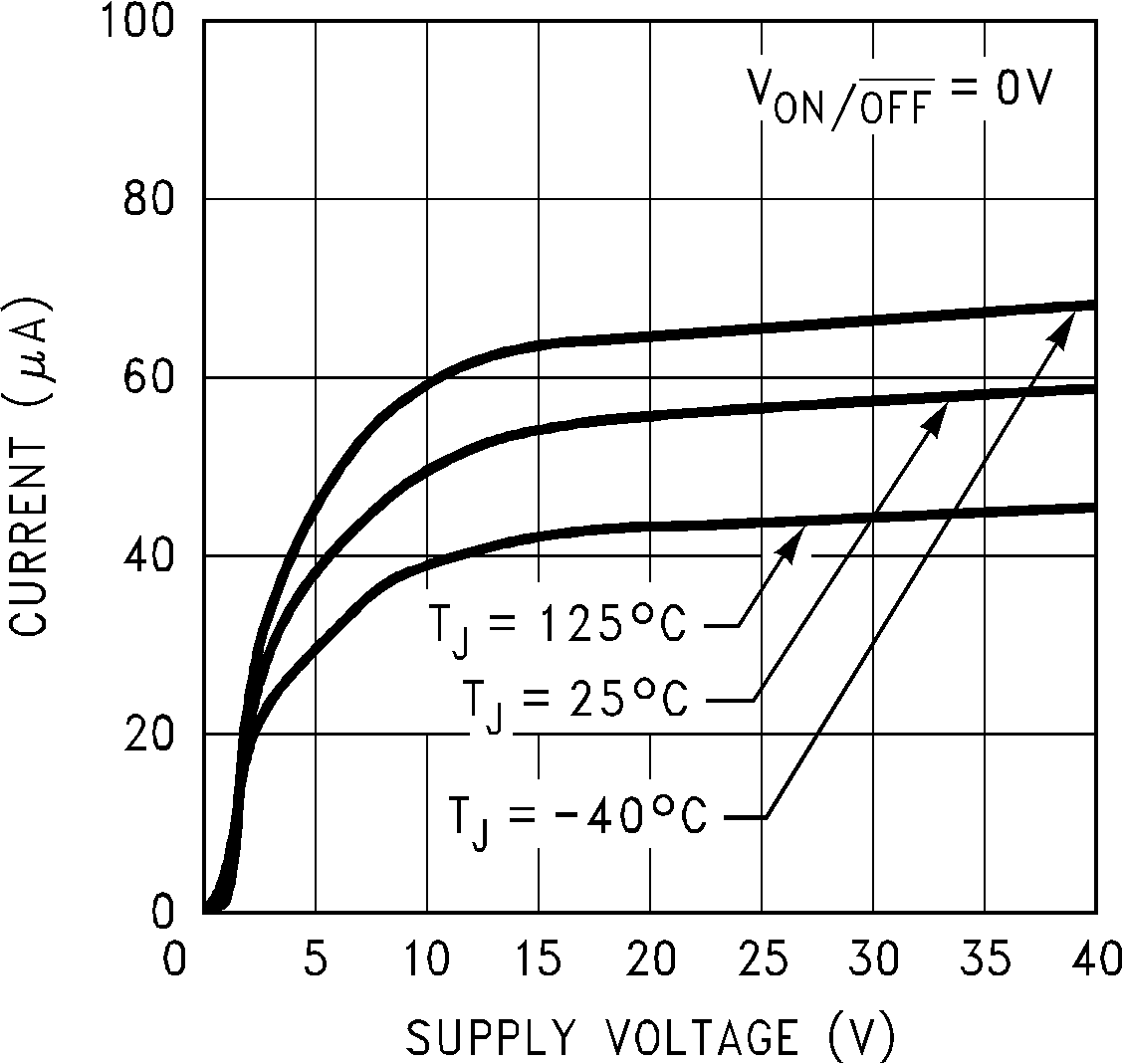 Figure 7. Standby Quiescent Current
Figure 7. Standby Quiescent Current
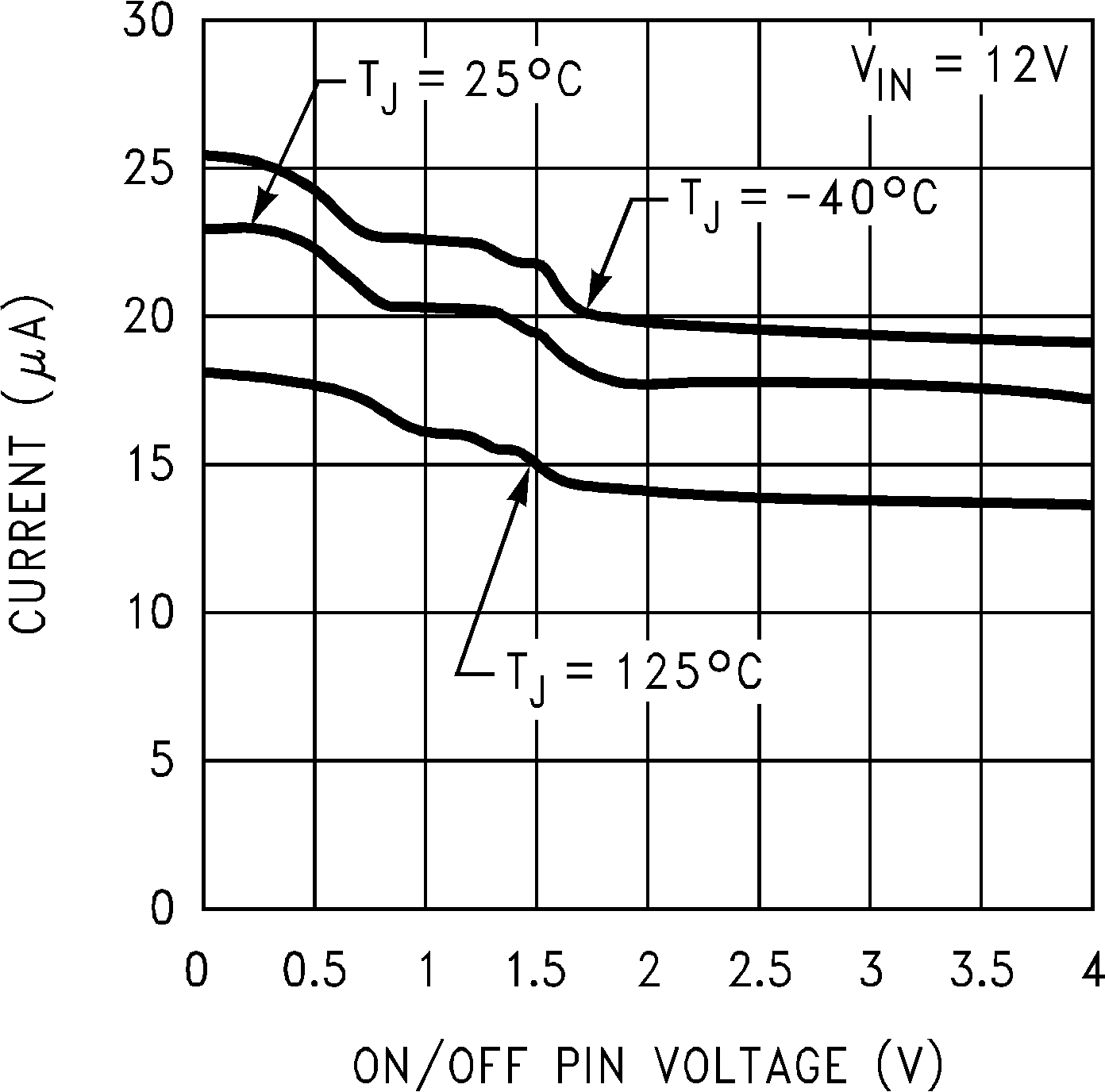 Figure 9. ON/OFF Pin Current (Sourcing)
Figure 9. ON/OFF Pin Current (Sourcing)
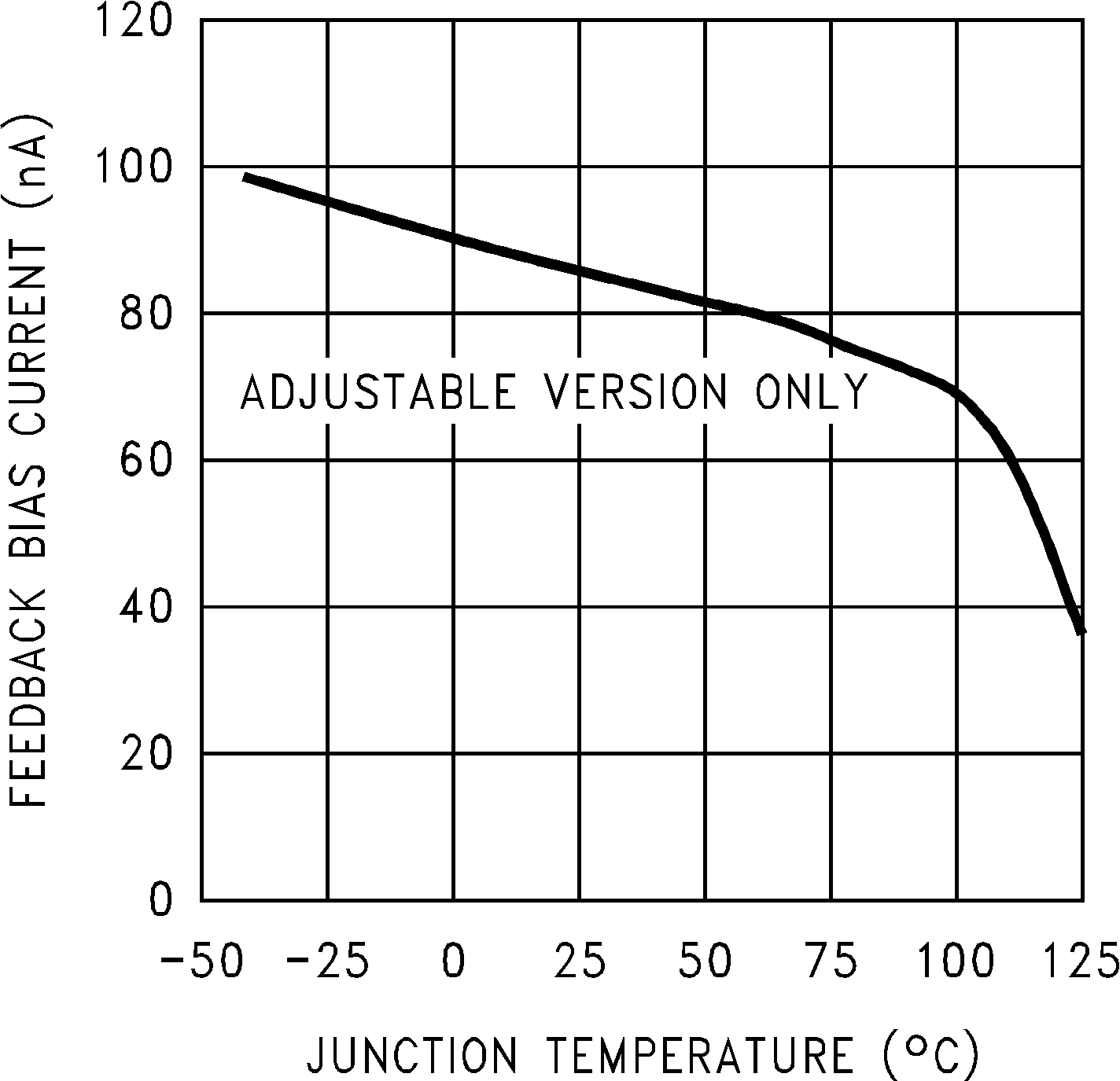
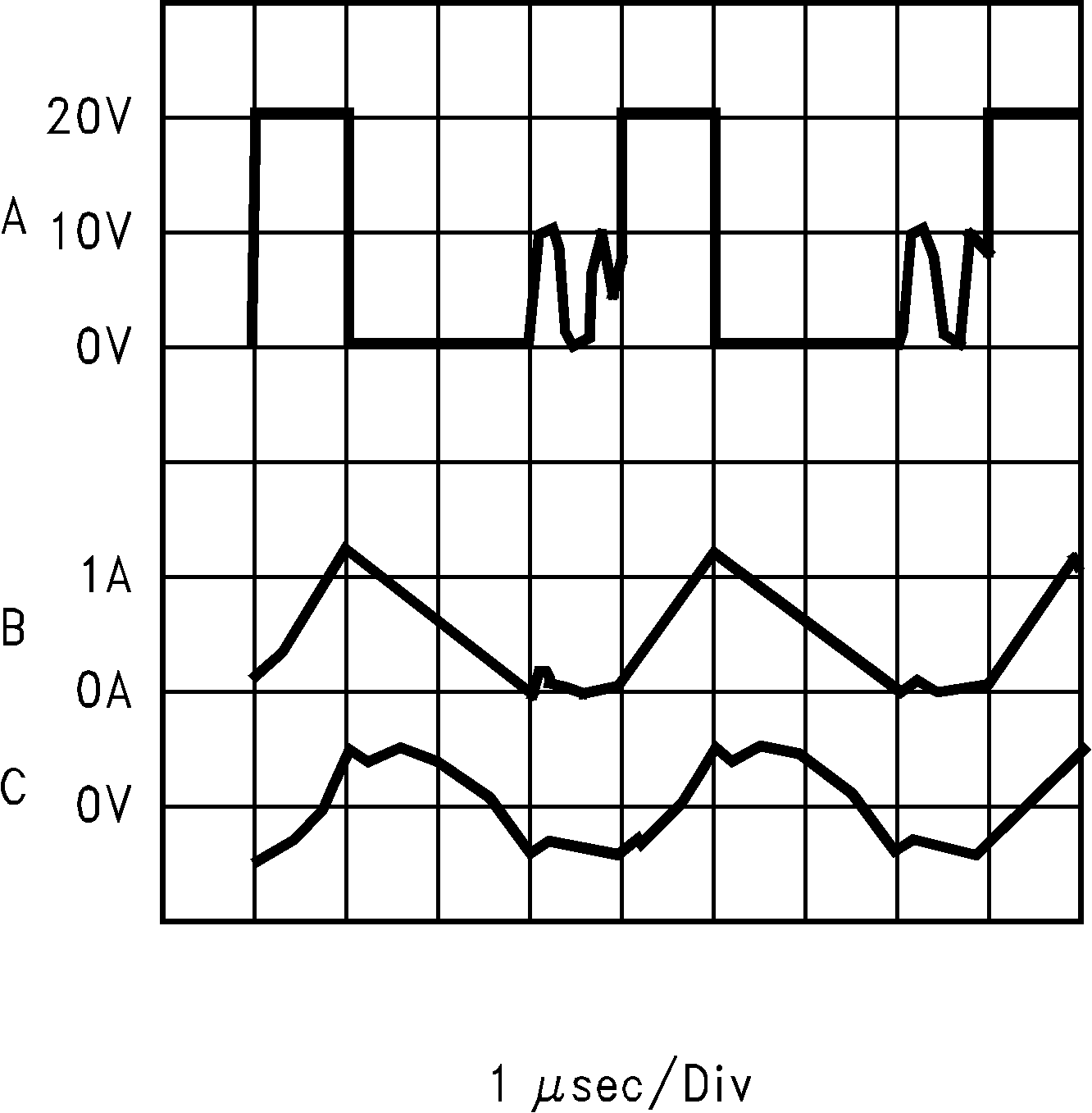
| VSW pin voltage, 10 V/div | VIN = 20 V, VOUT = 5 V, |
| Inductor current, 1 A/div | ILOAD = 500 mA, L = 10 μH, |
| Output ripple voltage, 20 mV/div AC-coupled |
COUT = 400 μF, COUTESR = 13 mΩ |
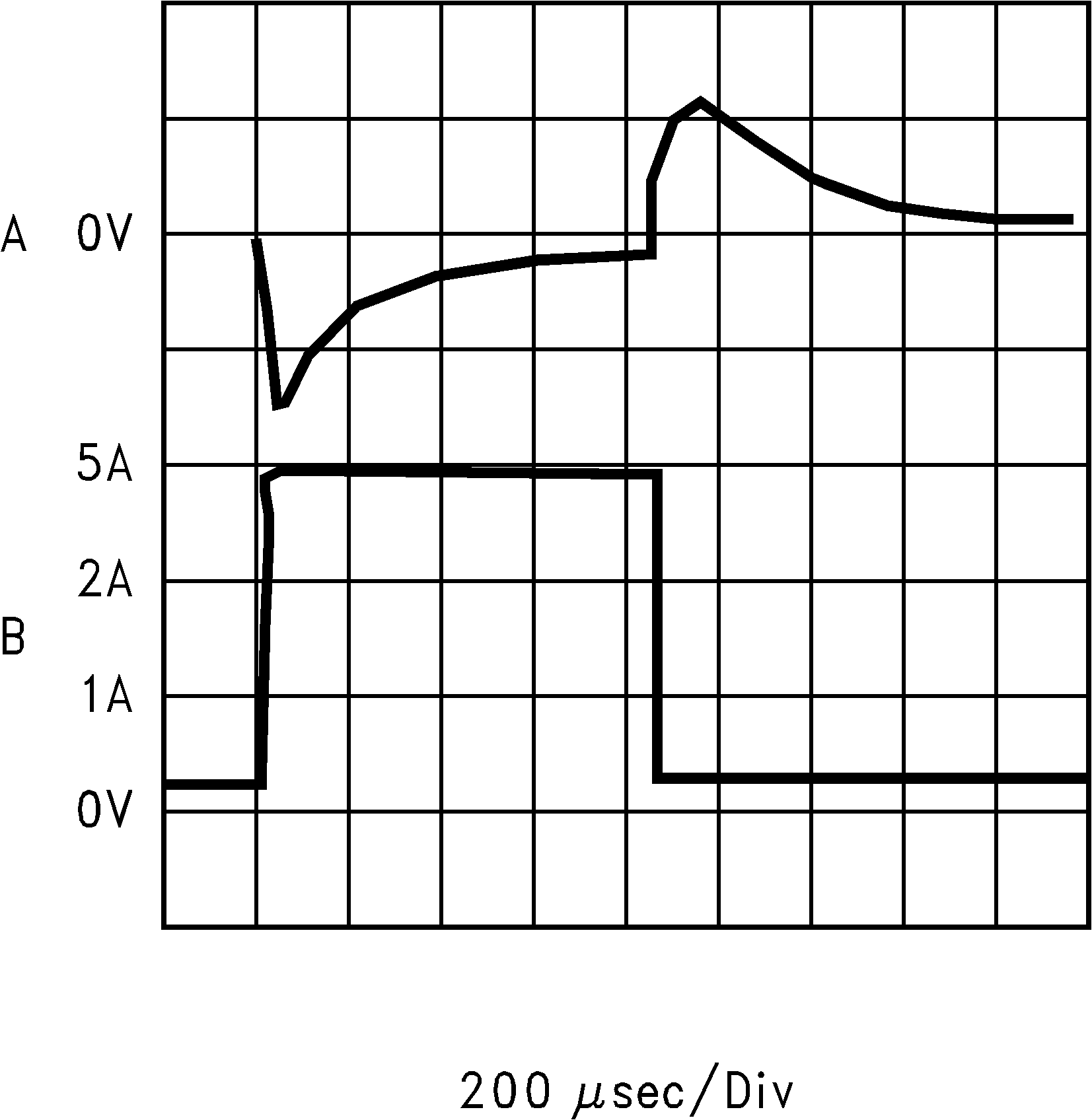
| Output voltage, 100 mV//div, | VIN = 20 V, VOUT = 5 V, |
| AC-coupled | L = 10 μH, |
| Load current: 200 mA to 5-A load pulse |
COUT = 400 μF, COUTESR = 13 mΩ |
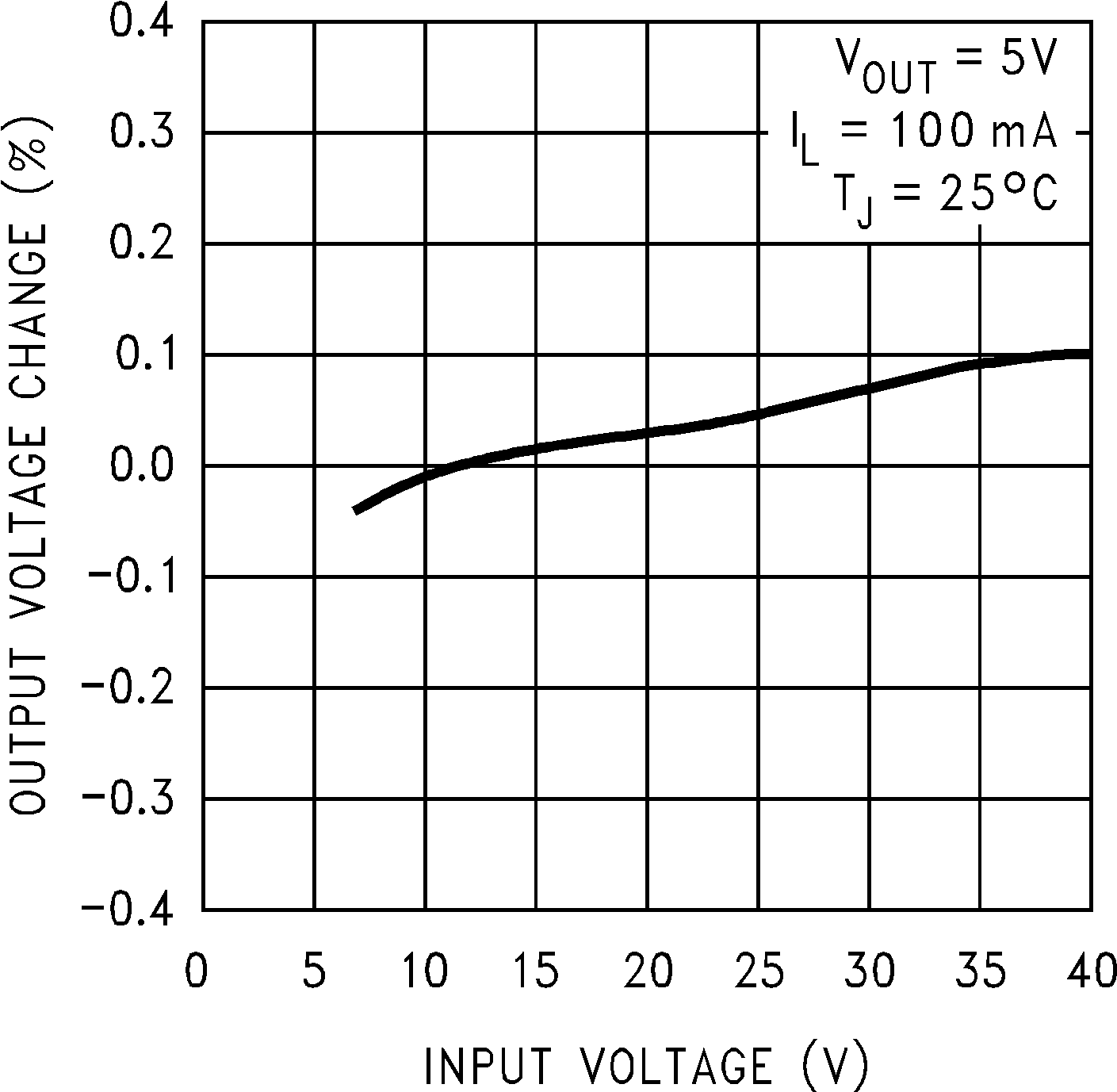 Figure 2. Line Regulation
Figure 2. Line Regulation
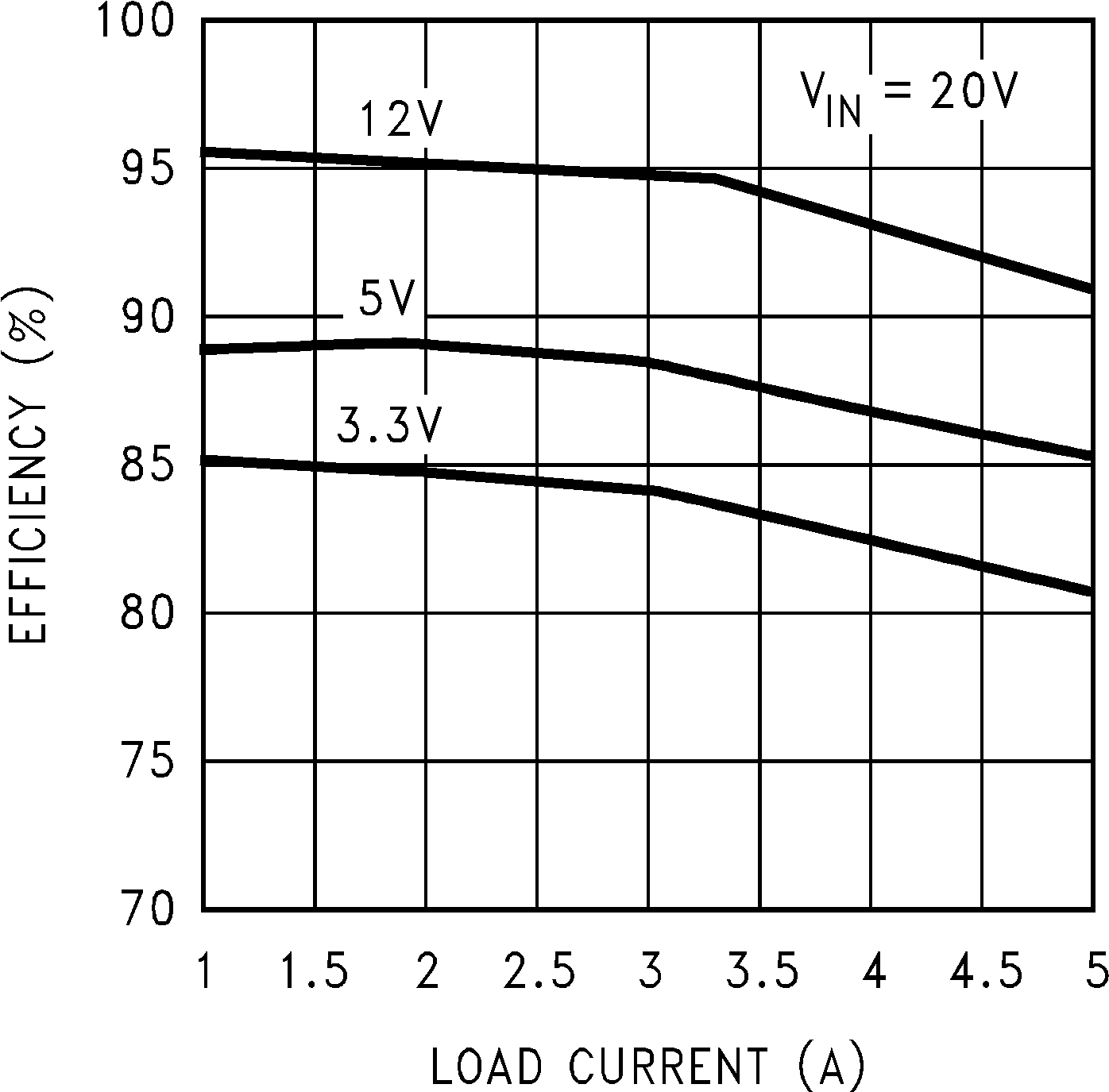 Figure 4. Efficiency vs ILOAD
Figure 4. Efficiency vs ILOAD
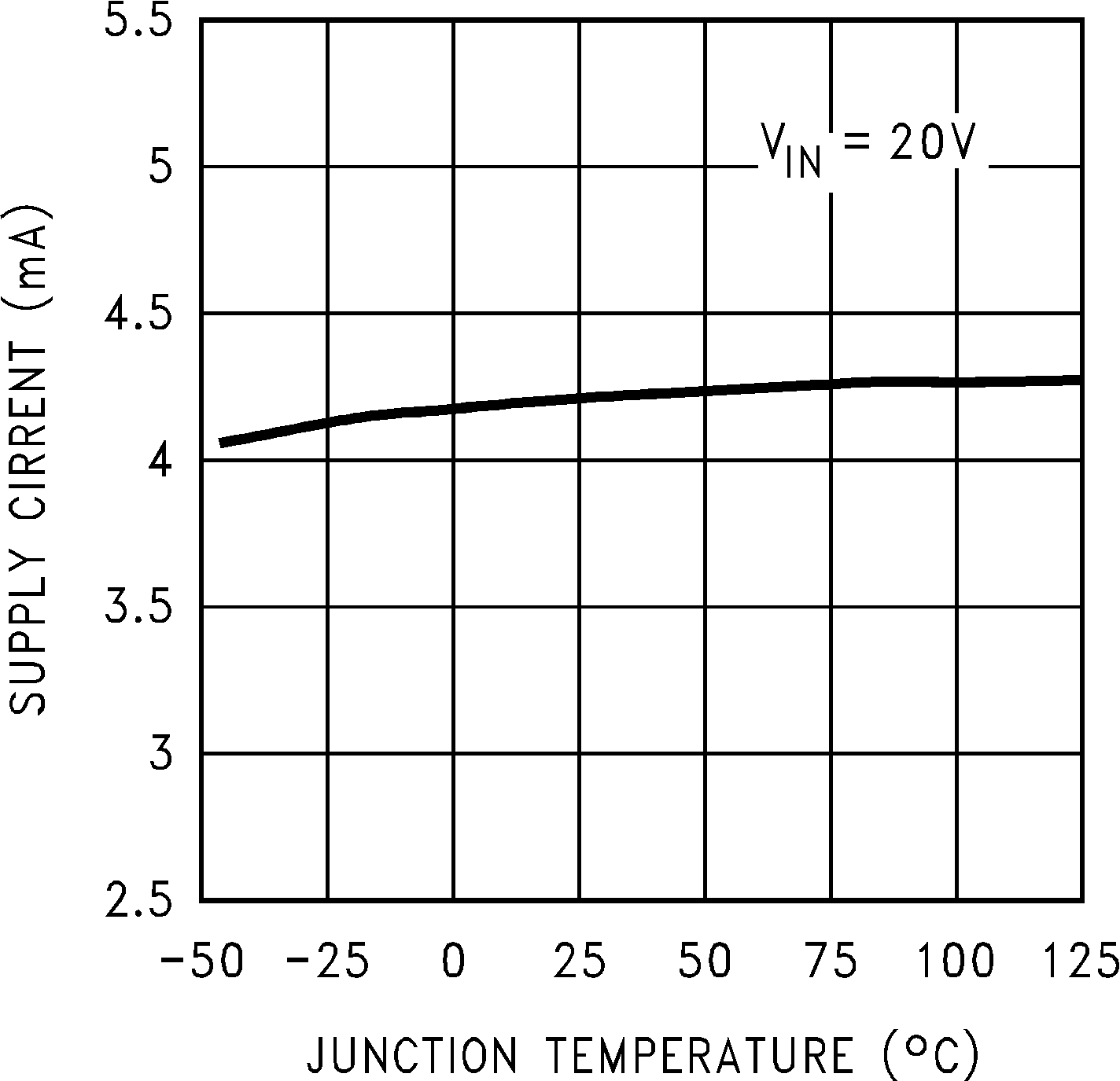 Figure 6. Operating Quiescent Current
Figure 6. Operating Quiescent Current
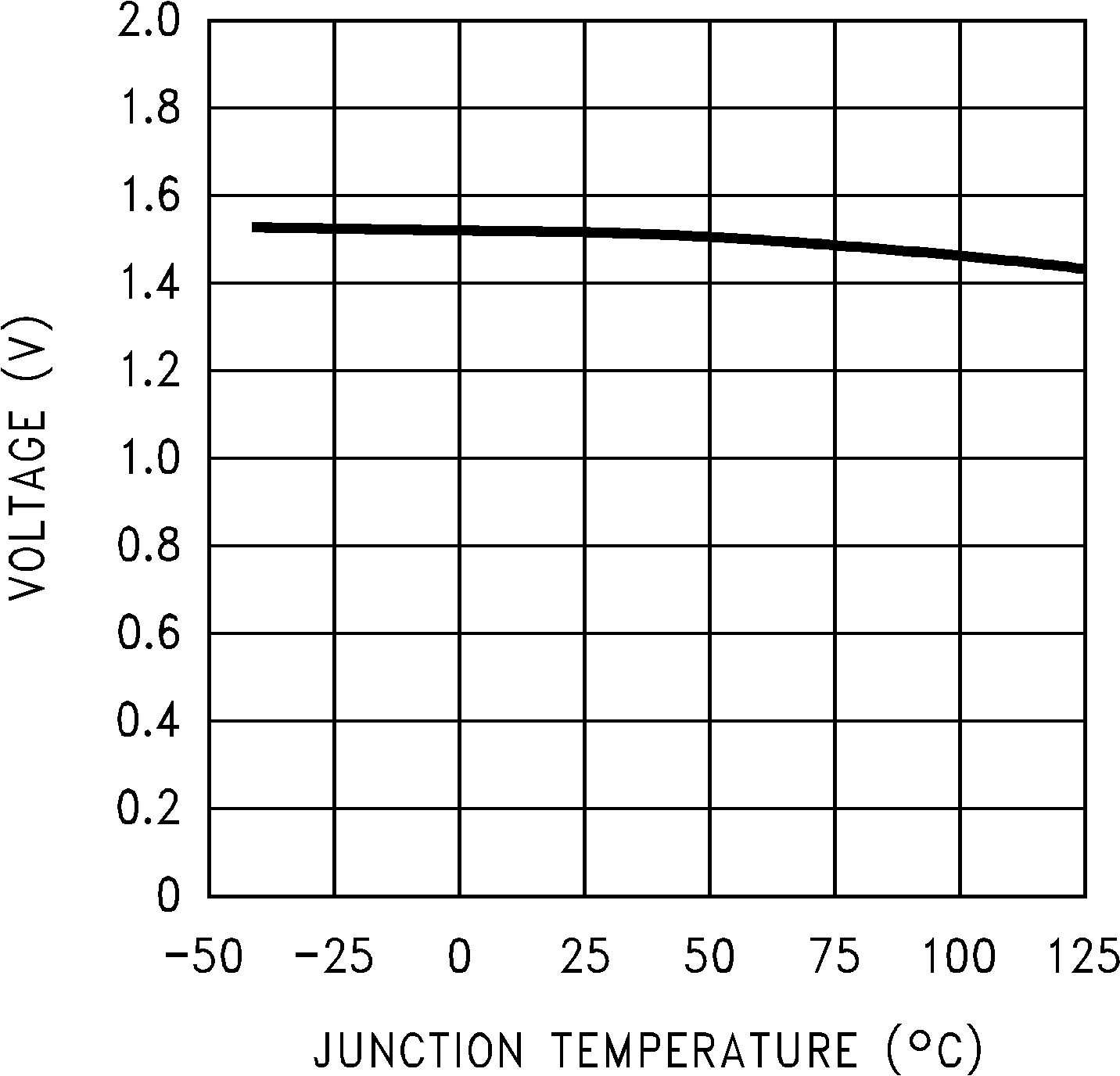 Figure 8. ON/OFF Threshold Voltage
Figure 8. ON/OFF Threshold Voltage
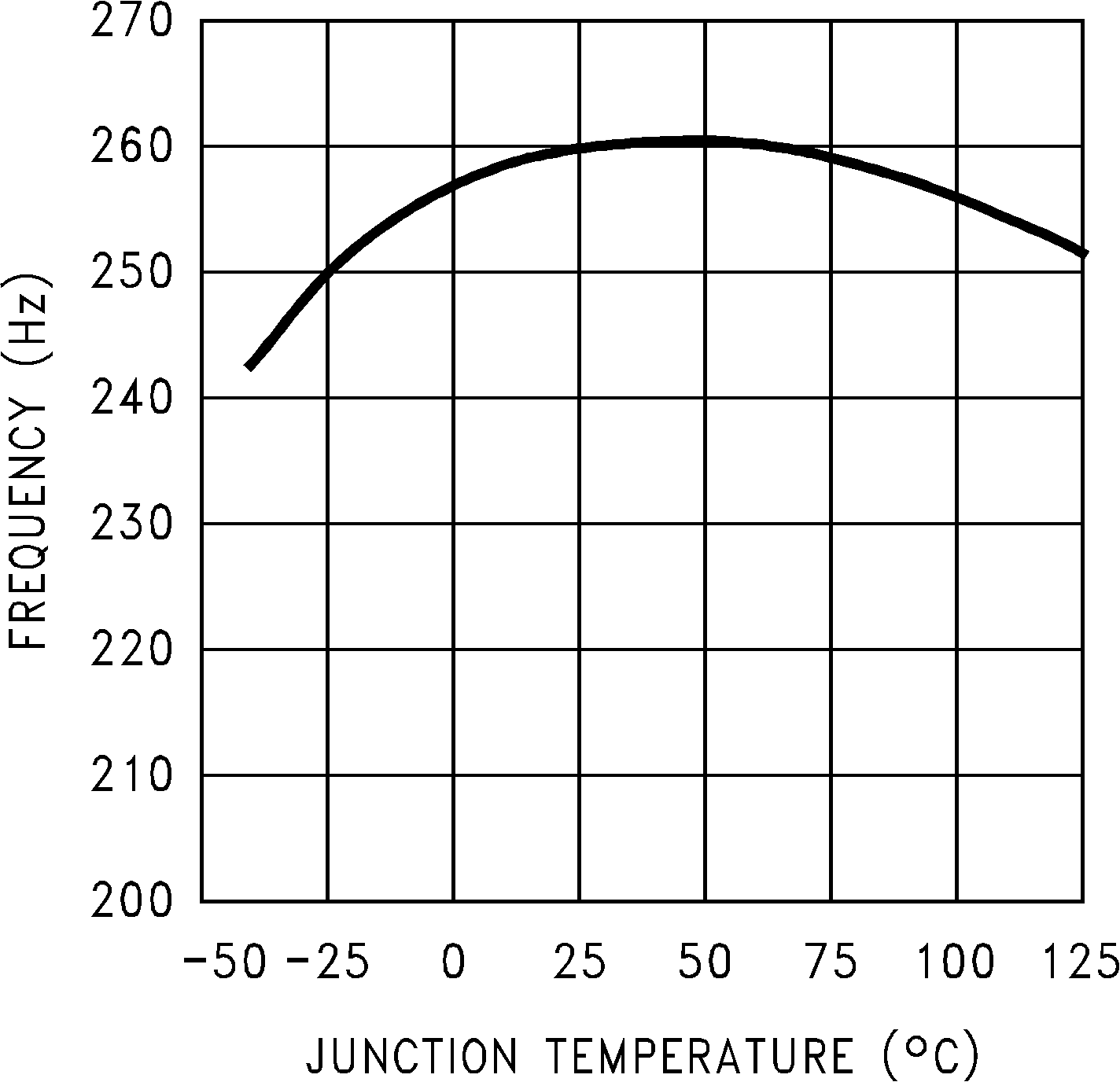 Figure 10. Switching Frequency
Figure 10. Switching Frequency
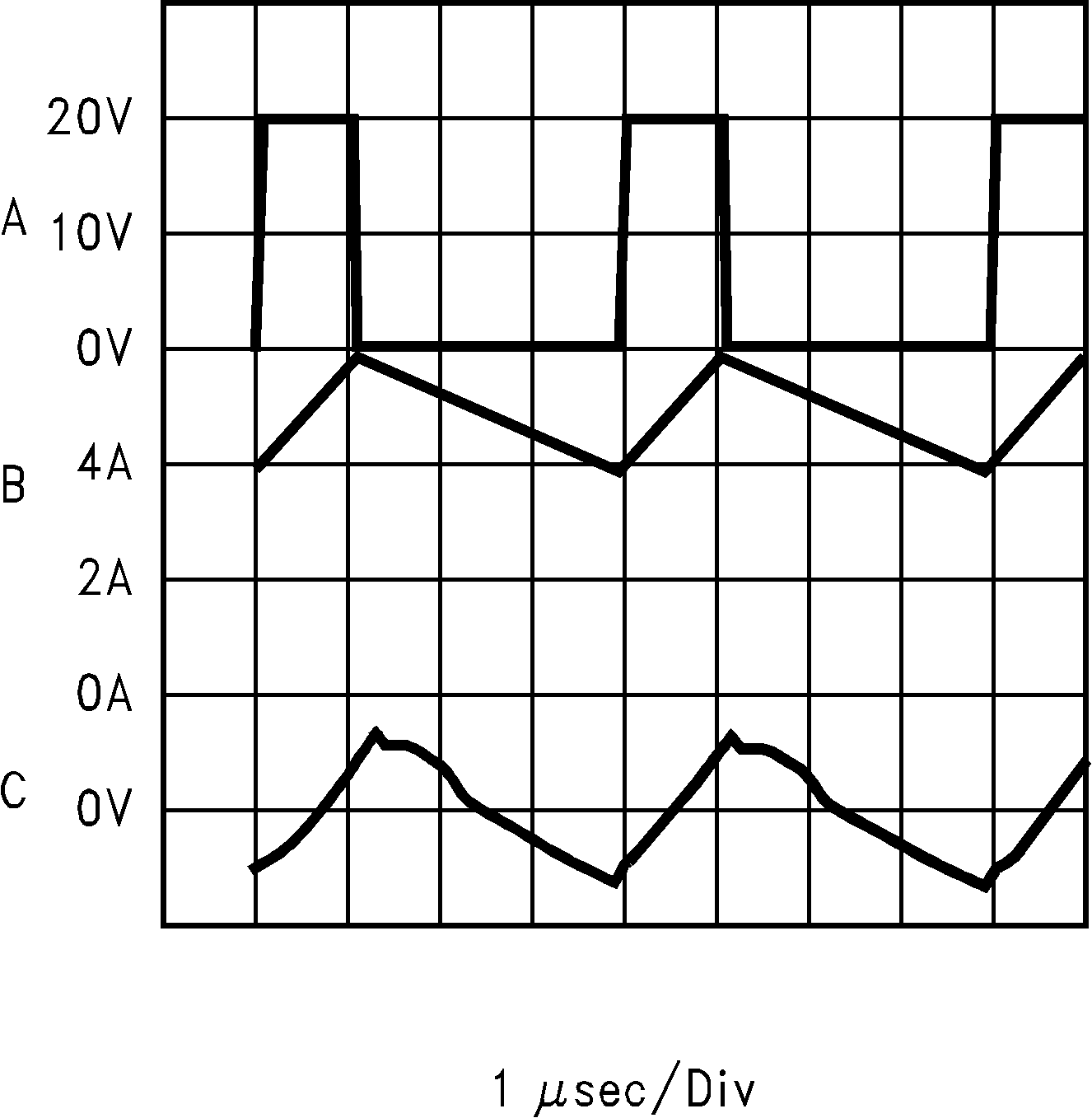
| VSW pin voltage, 10 V/div | VIN = 20 V, VOUT = 5 V, |
| Inductor current, 2 A/div | ILOAD = 5 A, L = 10 μH, |
| Output ripple voltage, 20 mV/div AC-coupled |
COUT = 400 μF, COUTESR = 13 mΩ |
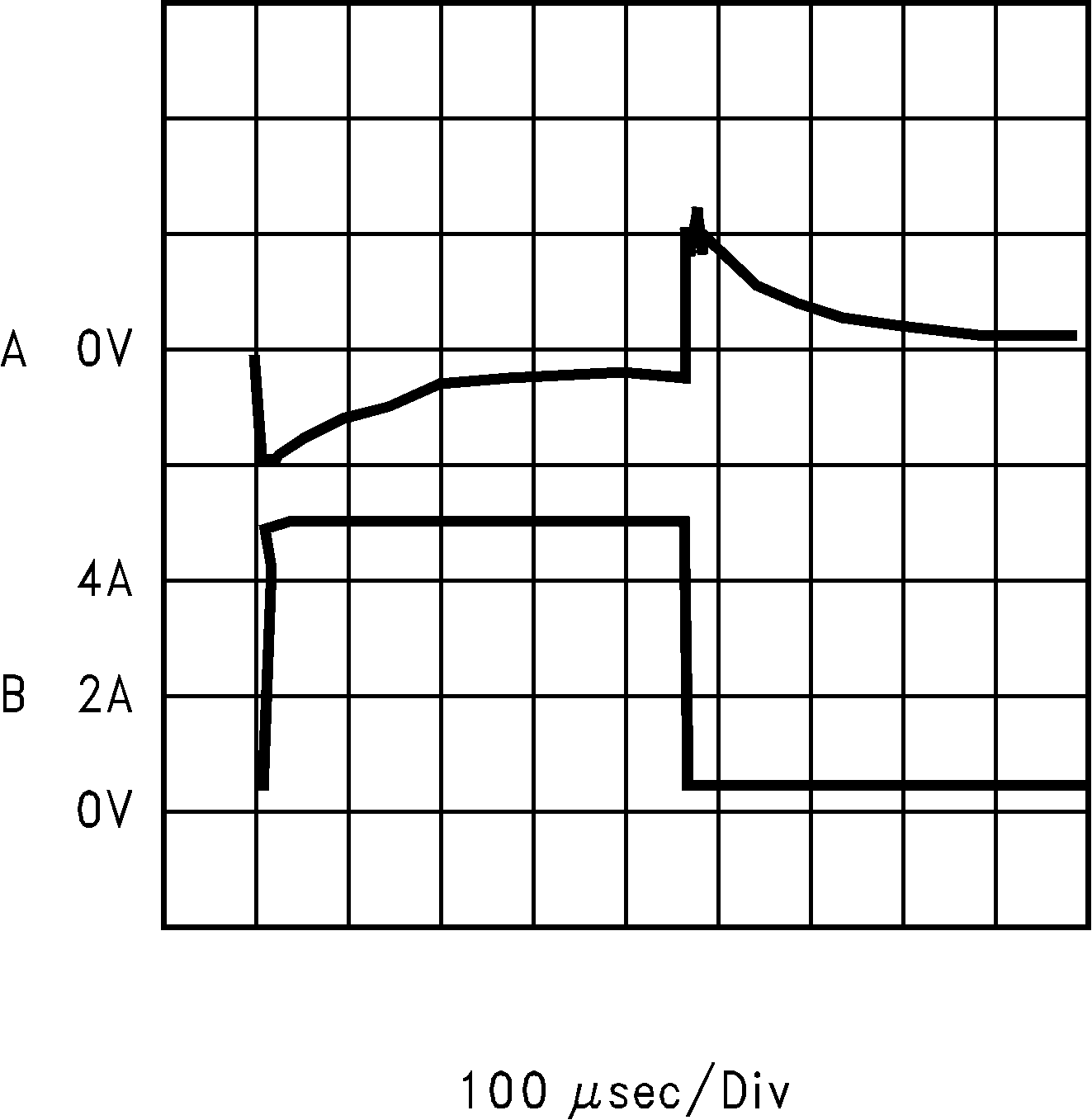
| Output voltage, | VIN = 20 V, VOUT = 5 V, |
| 100 mV//div, AC-coupled |
L = 10 μH, |
| Load current: 500 mA to 5-A load pulse |
COUT = 400 μF, COUTESR = 13 mΩ |